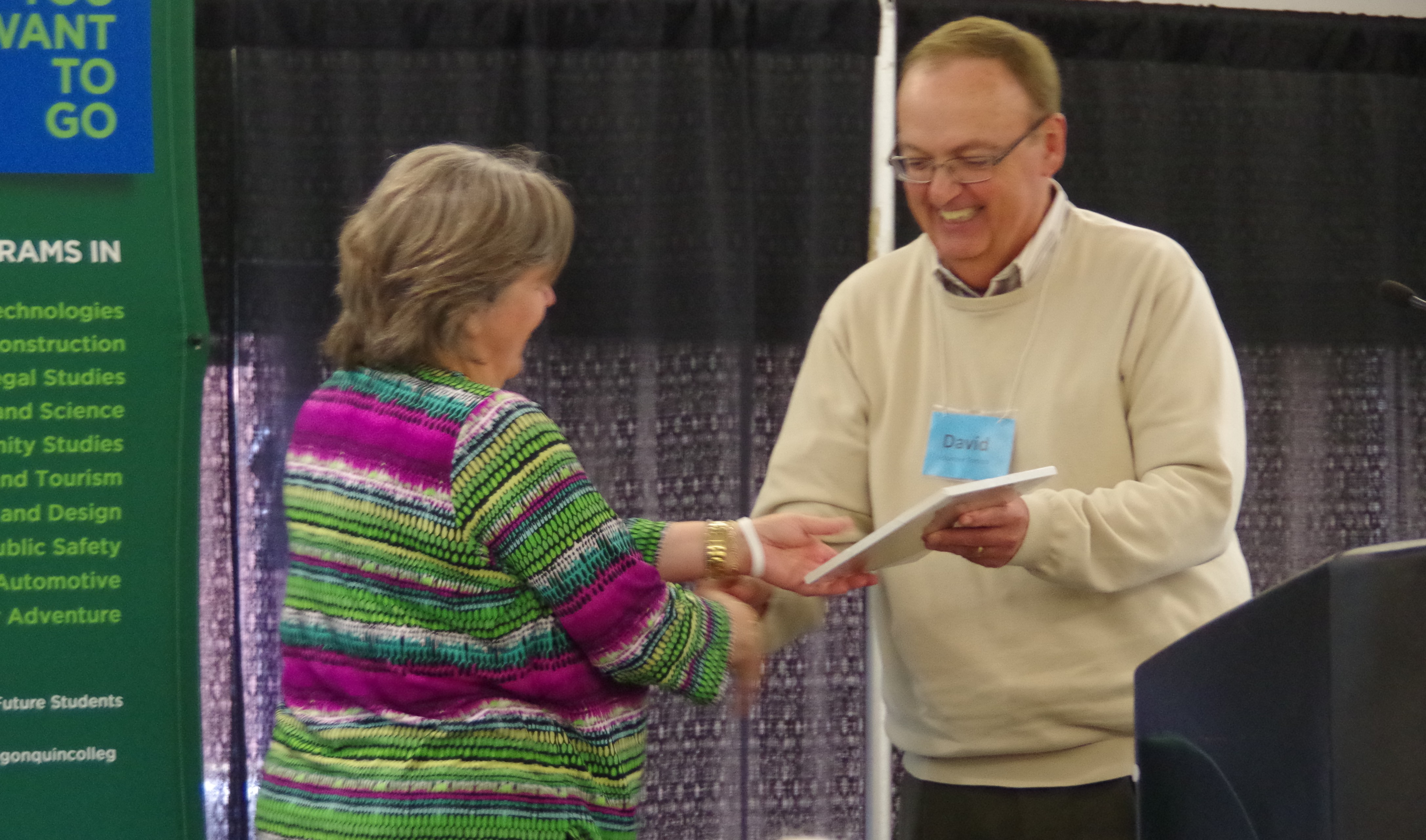
Volunteer Canada recognizes Liz Weaver for her contributions to volunteerism in Canada at the Healthy, Resilient Communities Conference May 2014.
Campus community research partnerships are exciting and challenging, says Liz Weaver, Vice-President of Tamarack. For the last three years, Liz also co-led the poverty reduction hub of Community First: Impacts of Community Engagement, or CFICE.
Under her co-leadership, the hub researched big issues in poverty, including living wage, the stigma of poverty and access to post-secondary education. Now, Liz is leaving CFICE to take on a new role at Tamarak, directing its Learning Centre.
All at CFICE would like to thank Liz for her wonderful work with the poverty hub, and congratulate her on her new position.
“I particularly appreciated the way Liz promoted CFICE, her generosity sharing her knowledge, and her commitment to improving the infrastructure for community campus partners to progress together towards a more just and equitable society,” says Geri Briggs, co-manager of CFICE and director of the Canadian Alliance for Community Service-Learning.
“Liz really understood the pressures and goals of campuses, while being deeply rooted in the community. That meant she was able to effectively translate the needs of campuses to community groups and facilitate strong relationships,” says Karen Schwartz, Associate Dean of Research & Graduate Affairs, Faculty of Public Affairs, Carleton University. “Liz is a great problem solver – she’s very clear-thinking and gets to the root of an issue right away,” adds Schwartz.
Liz Weaver shared her parting insights on working in campus community partnerships:
- “A lot of this work is based on fragile relationships, because people come and go,” Liz explains. “You have to dive deeper than just one-to-one connections and create resilient relationships that span broader communities.”
- Academics and students tend to work on an eight-month calendar, which presents challenges for community organizations that work year-round, she says. “There’s also more bureaucracy within large institutions like universities, so we have to figure out how to navigate the system,” she adds.
- More than anything, it’s challenging for stakeholders to carve out the time for campus-community partnerships. “Everybody does this off the side of their desks, and despite best intentions, these partnerships often compete with all of our other priorities,” says Liz.
- It’s also critical to realize that campus and community have different goals, says Liz. Campus partners emphasize teaching, learning and discussion, while community partners focus on engagement and policy change. “They aren’t necessarily competing; they can be complementary agendas,” says Liz. “But they are different agendas, and it’s vital to recognize those differences and find the mutuality of purpose.”
- Moving forward, Liz sees a trend in community work, with more activity at the cross-community level, as opposed to individual program and services. “In many communities, we reinvent the wheel over and over and over again. So, Tamarack is trying to figure out strategies for the co-generation of knowledge for social change,” she says. Liz believes campus-community partnerships are an intriguing opportunity to research the systematic issues in poverty and key identify barriers.